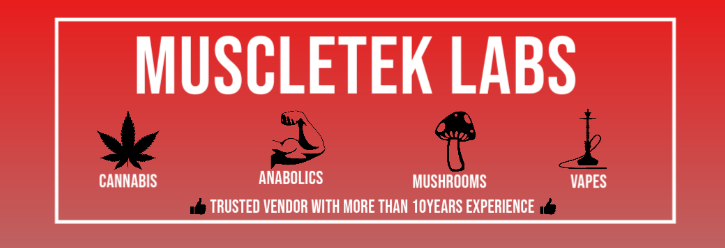New Crypto Payment Initiatives; Regulators Address Crypto in Speeches; Lawmakers Propose Legislation; OFAC Sanctions Crypto Actors; DeFi Hacked

In this issue:
• Crypto Payment Initiatives Announced in Stablecoins, Lightning Network, Mining
• SEC Chairman and Comptroller of the Currency Address Crypto in Speeches
• SEC Addresses Crypto Accounting, Commissioner Peirce Voices Criticisms
• Stablecoins Take Center Stage in Proposed Legislation, Reports and UN Donation
• OFAC Sanctions Russian Dark Markets, Adds 100 Crypto Public Keys to SDN List
• DOJ Forfeits $34M in Crypto Tied to Dark Markets, DeFi Hacks Continue
Crypto Payment Initiatives Announced in Stablecoins, Lightning Network, Mining
Late last week, the issuer of USD Coin (USDC) announced that it had selected a major U.S. bank as a primary custodian for USDC reserves. According to a press release, there were over $52 billion USDC in circulation as of March 2022.
In another recent development, a major bitcoin payment processor headquartered in Atlanta announced that it would begin to support Bitcoin Lightning Network payments. The Bitcoin Lightning Network is a secondary layer of the Bitcoin blockchain that was created to improve the cost and scalability of bitcoin transactions. According to a press release, the integration will allow merchants and customers using the company’s payment processing services to complete bitcoin transactions with lower fees.
In the Bitcoin mining sector, a major U.S. computer-chip producer recently announced details for its upcoming Bitcoin mining chip, which will ship in Q3 2022. The chip is focused on improving energy efficiency and sustainability. According to reports, each chip will deliver up to 580 gigahashes per second (GH/s) of hash rate with up to 26 joules per terahash (J/TH) of power efficiency and will support up to 256 integrated circuits per chain.
In a final development, this week a major U.S. cryptocurrency exchange released its 2022 Global State of Crypto report. Among other things, the report found that nearly half of all current crypto owners in the United States, Latin America and Asia Pacific first bought crypto in 2021. According to the report, respondents in countries that have experienced a 50 percent or more devaluation of their currency against the USD over the past 10 years were more than five times as likely to say they plan to purchase crypto in the coming year.
SEC Chairman and Comptroller of the Currency Address Crypto in Speeches
In a speech this week, Chairman Gary Gensler of the U.S. Securities and Exchange Commission (SEC) made remarks addressing three areas of the SEC’s current focus in the crypto markets: platforms, stablecoins and tokens. Gensler stated that he believes crypto trading and lending platforms (centralized or decentralized) are likely trading securities. Accordingly, he has asked the SEC staff to work on several projects: (1) getting platforms registered and regulated like exchanges and the potential application of exemptions, such as alternative trading systems; (2) how to register and regulate platforms in which securities and non-securities are trading, including working with the Commodity Futures Trading Commission (CFTC); (3) how to register and regulate platforms that custody crypto-assets, to include the appropriateness of segregating custody; and (4) if platforms also act as market makers, the potential requirement to segregate that activity.
As to stablecoins, Gensler raised three policy issues: (1) financial policy and monetary policy considerations, such as what backs the tokens such that they can be converted to dollars on a one-to-one basis; (2) how tokens will potentially be used for illicit activity; and (3) investor protection concerns regarding potential conflicts of interest and market integrity questions. With regard to digital asset tokens, he reiterated remarks from former SEC Chair Jay Clayton, that “[w]ithout prejudging any one token, most crypto tokens are investment contracts under the Howey Test,” and emphasized the importance of getting crypto tokens that are securities registered with the SEC.
In another recent speech, Acting Comptroller of the Currency (OCC), Michael Hsu, warned banks to consider the tail risks of trading crypto derivatives. He noted several risks worth considering: (1) limited or unreliable price histories of crypto-assets; (2) crypto positions being netted for purposes of risk aggregation in risk reporting, regulatory capital and risk management (e.g., net risk positions reported as hedged and thus manageable); and (3) heightened wrong-way risk with crypto derivatives (such that a bank’s exposure to a counterparty and the risk of the counterparty’s default are both increased).
SEC Addresses Crypto Accounting, Commissioner Peirce Voices Criticisms
The U.S. Securities and Exchange Commission (SEC) staff recently issued Staff Accounting Bulletin Number 121 (SAB 121), which addresses the obligations to safeguard crypto-assets by an entity that holds them for platform users. According to SAB 121, among other things, companies should record each crypto holding for users as a liability and corresponding asset on their balance sheet at fair market value; disclose the nature and amount of crypto-assets the entity holds for its platform users (with a separate disclosure for each significant crypto-asset); and disclose the vulnerabilities that the entity has as a consequence of any concentration in its crypto-related activities.
SEC Commissioner Hester Peirce issued a statement calling SAB 121 “another manifestation of the [SEC’s] scattershot and inefficient approach to crypto.” Peirce’s criticisms of SAB 121 include the following: (1) timing, in that the staff issued this now, when the impetus seems to be an October 2020 report; (2) the staff’s failure to acknowledge the SEC’s role in creating the legal and regulatory risks that are indicated as the justification for the accounting treatment; (3) questions regarding whether this is the appropriate method to make accounting changes and communicate those changes to the public; and (4) questions regarding whether this is the appropriate process to make these changes as opposed to a “more deliberate approach to changing rules,” such as consulting with affected parties, rulemaking with public notice and comment period, or Financial Accounting Standards Board standard setting.
Stablecoins Take Center Stage in Proposed Legislation, Reports and UN Donation
This week, U.S. Senate Banking Committee Ranking Member Pat Toomey (R-Pa.) released draft legislation that, if enacted, would establish a stablecoin regulatory framework with the goal of allowing crypto-innovation to flourish “while protecting consumers and minimizing potential risks from stablecoins to the financial system.” Key components of the draft legislation include (1) authorizing three methods by which stablecoin issuers may lawfully operate (pursuant to a new federal license, under current state money transmitter laws or through insured depository institutions); (2) requiring stablecoin issuers to comply with certain consumer protection protocols, such as disclosures concerning the existence of assets backing the stablecoin and accounting audits; (3) clarifying that certain types of stablecoins are definitively not securities; and (4) applying privacy protections to stablecoin and virtual currency transactions.
In the U.K., the nation’s public finance and economic policy department, Her Majesty’s Treasury (HM Treasury), published an “approach to cryptoassets, stablecoins, and distributed ledger technology [(DLT)] in financial markets” in response to its 2021 Consultation and Call for Evidence related to the same. Among other things, the report summarizes the government’s intent to legislate certain activities related to the issuance and use of stablecoins used for payment purposes and other crypto-asset activities.
This week the United Nations refugee agency, USA for UNHCR, announced that it has accepted its first stablecoin cryptocurrency donation to support humanitarian aid “for families forced to flee Ukraine to neighboring countries.” According to a press release, the donation of $2.5 million in the stablecoin BUSD was received from Binance Charity, an entity affiliated with the Binance cryptocurrency exchange.
Developments in stablecoins and central bank digital currency (CBDC) are addressed in a recent report from a Big Four accounting and consulting firm. Among other things, the report notes that stablecoin market capitalization reached approximately $190 billion in early 2022.
OFAC Sanctions Russian Dark Markets, Adds 100 Crypto Public Keys to SDN List
According to a press release this week from the U.S. Department of the Treasury’s Office of Foreign Assets Control (OFAC), OFAC “sanctioned the world’s largest and most prominent darknet market, Hydra Market (Hydra).” The operation targeting Hydra was a collaborative initiative among multiple U.S. enforcement agencies and “the German Federal Criminal Police, who … shut down Hydra servers in Germany and seized $25 million worth of bitcoin.” The press release notes that OFAC “identified approximately $8 million in ransomware proceeds that transited Hydra’s virtual currency accounts” and “approximately 86 percent of the illicit Bitcoin received directly by Russian virtual currency exchanges in 2019 came from Hydra.” In addition, OFAC added over 100 cryptocurrency public keys associated with Hydra’s operations to OFAC’s Specially Designated Nationals (SDN) List.
The OFAC press release also announced sanctions against Garantex, a cryptocurrency exchange that operated out of the same office building in Moscow, Russia, as two other OFAC-sanctioned cryptocurrency exchanges, SUEX and CHATEX. According to the press release, “[a]nalysis of known Garantex transactions shows that over $100 million in transactions are associated with illicit actors and darknet markets, including nearly $6 million from Russian RaaS gang Conti and also including approximately $2.6 million from Hydra.”
DOJ Forfeits $34M in Crypto Tied to Dark Markets, DeFi Hacks Continue
On Monday, the U.S. Department of Justice announced that federal prosecutors successfully forfeited approximately $34 million worth of cryptocurrency tied to illegal darknet activity. As alleged in the government’s complaint, a South Florida resident stole and sold illicit items and hacked online account information, and then laundered stolen funds by using tumblers (which can hide the source of cryptocurrencies) and illegal money transmitter services and by “chain-hopping,” that is, jumping between different cryptocurrencies in rapid succession, to evade detection. The forfeiture, which is reportedly one of the largest cryptocurrency forfeiture actions ever filed by the United States, is the result of Operation TORnado, a joint investigation that stems from the ongoing efforts of OCDETF, a partnership between federal, state and local law enforcement agencies, tasked with identifying, disrupting and dismantling priority drug traffickers, money launderers and other priority criminal organizations.
Meanwhile, major hacks in the DeFi space continue to make headlines. Ethereum-based lending protocol Inverse Finance recently announced it was attacked, with hackers making off with $15.6 million worth of stolen cryptocurrency. According to Inverse, the hack targeted its Anchor money market by artificially manipulating token prices to borrow loans against extremely low collateral. Separately, DeFi lending protocol Ola Finance also recently suffered a $3.6 million hack.
In a development related to the recent hack of the Ronin Network, which lost more than $600 million in crypto as a result of a bridge hack, according to reports about 70 percent of the hacked funds have been laundered through Tornado Cash, a cryptocurrency privacy tool. According to recent reports, bridge hacks have resulted in more than $1 billion in cryptocurrency being stolen in just over a year across seven different incidents.
Found this interesting? Then check our main news page where you can find all articles related to Crypto, Crime, Darknet, Security and much more!




















